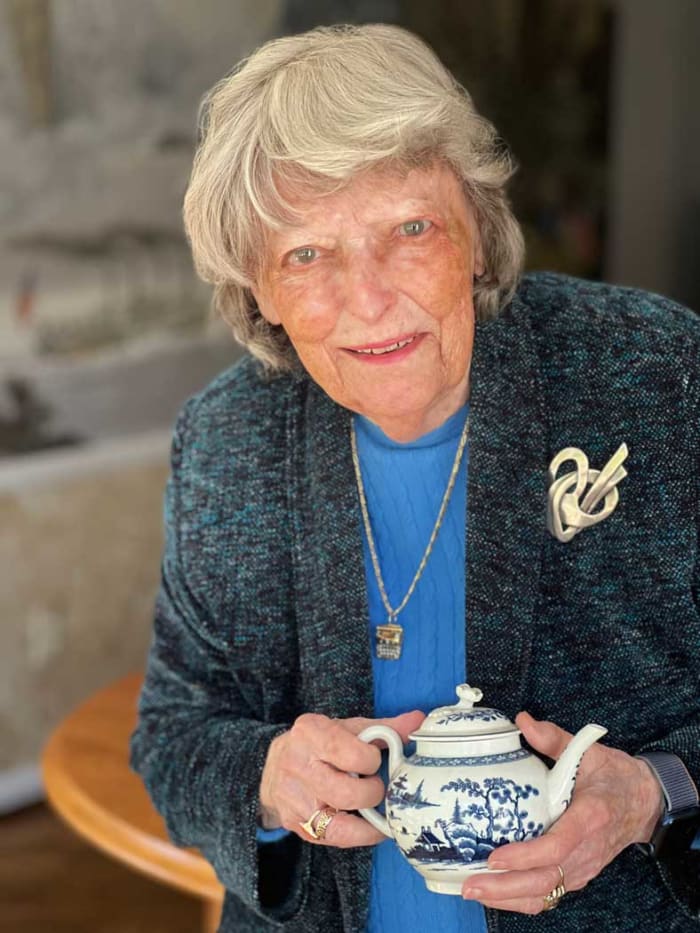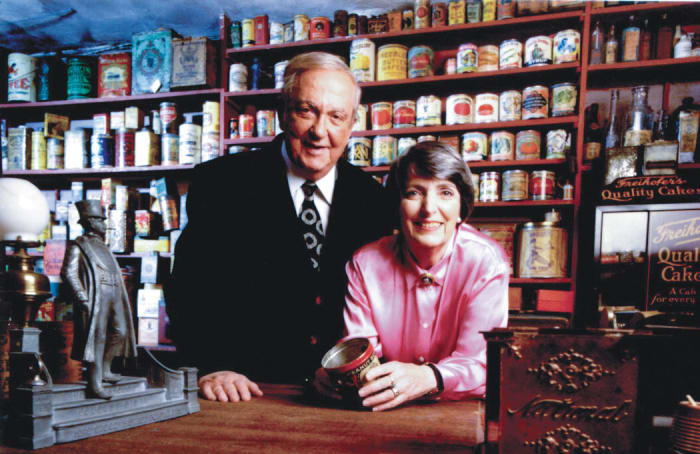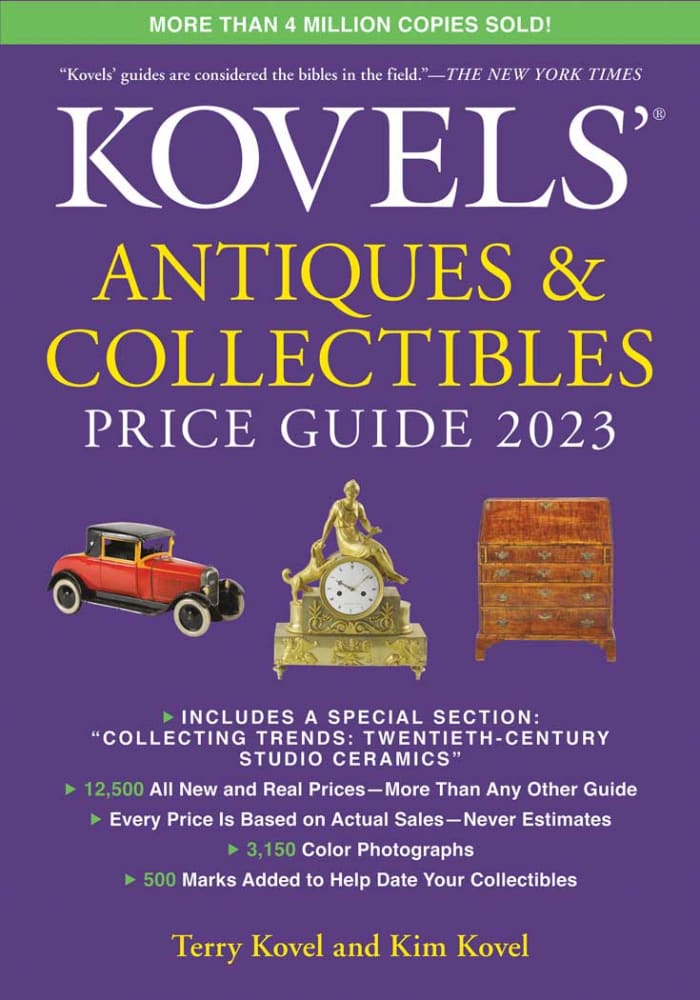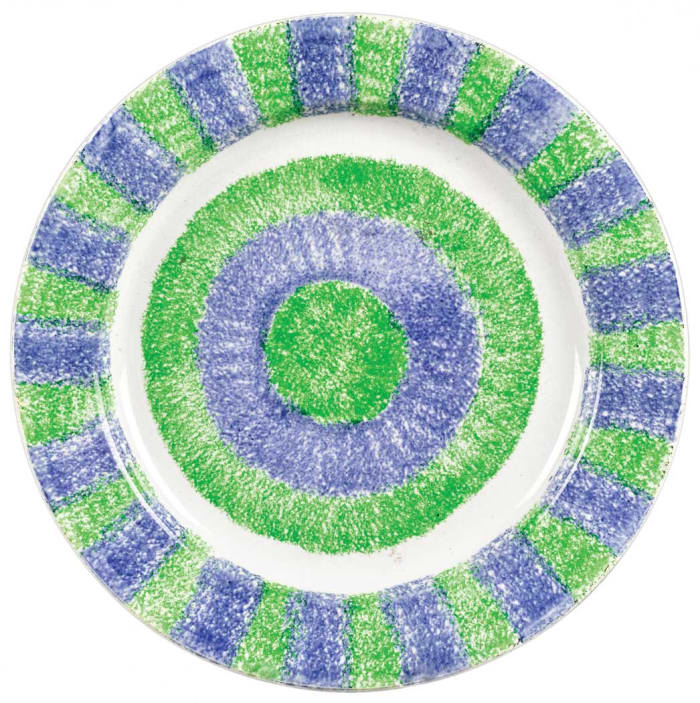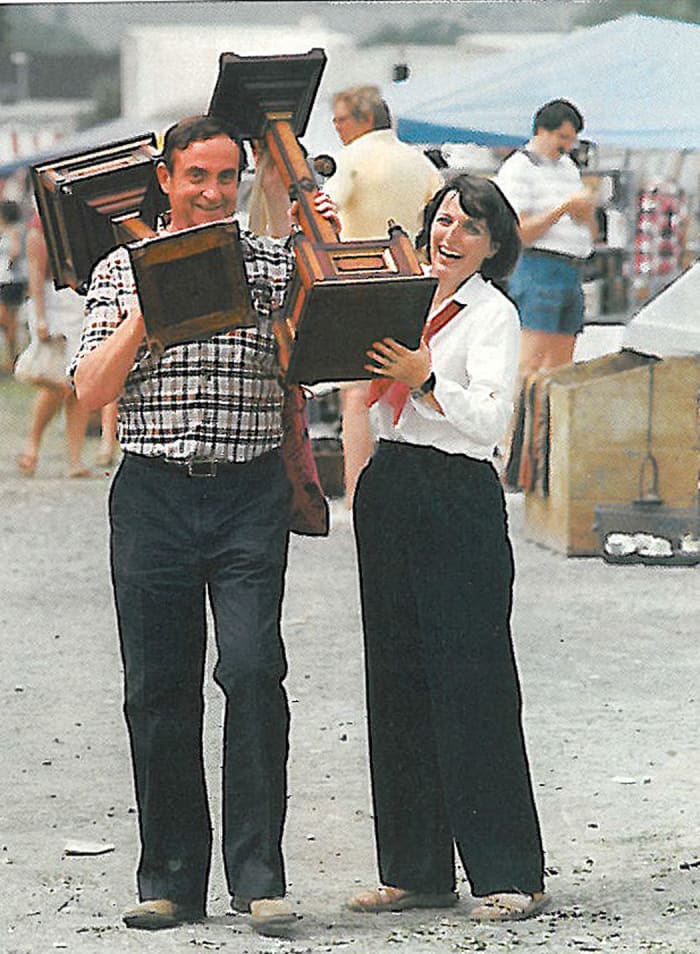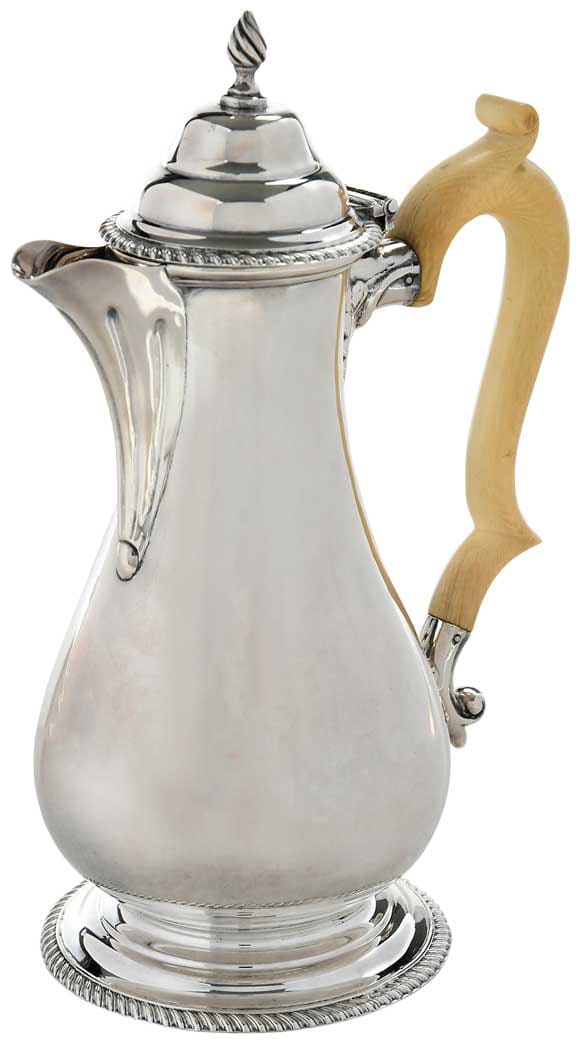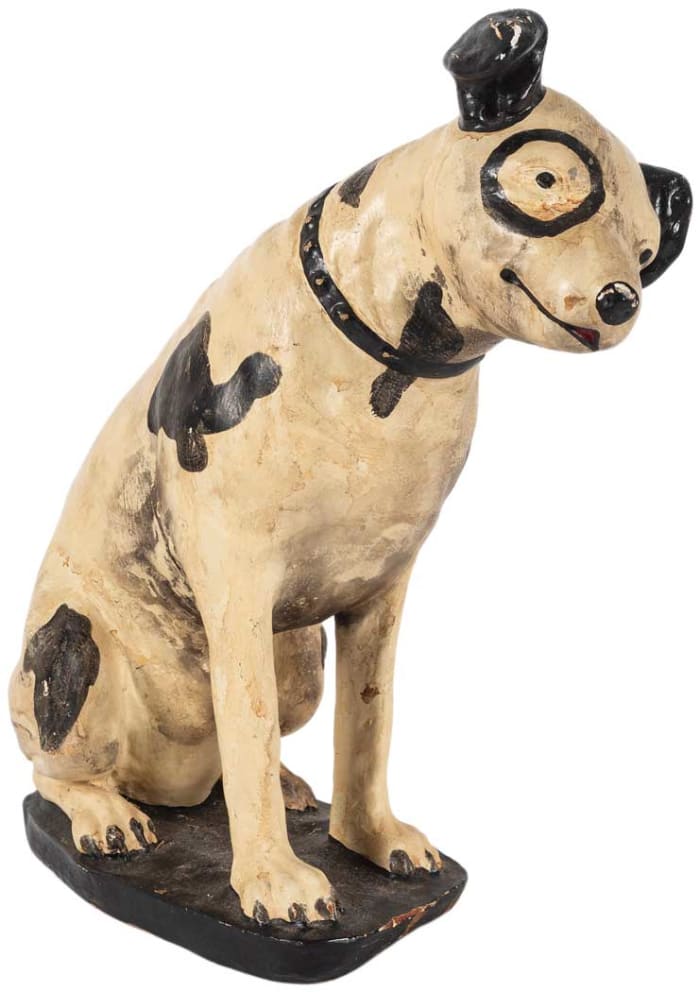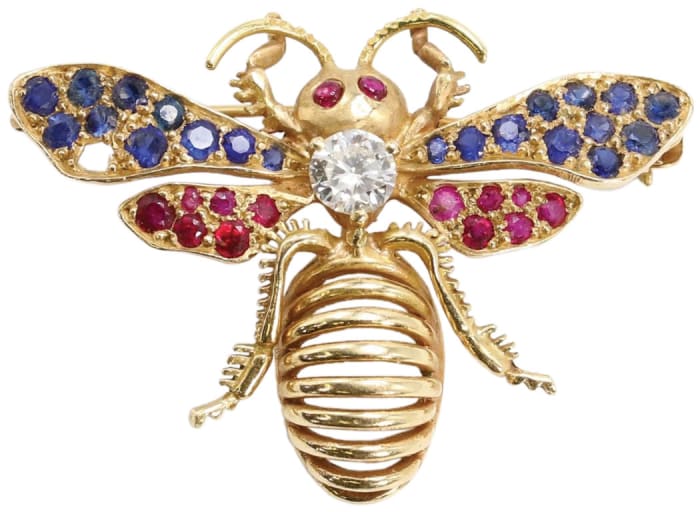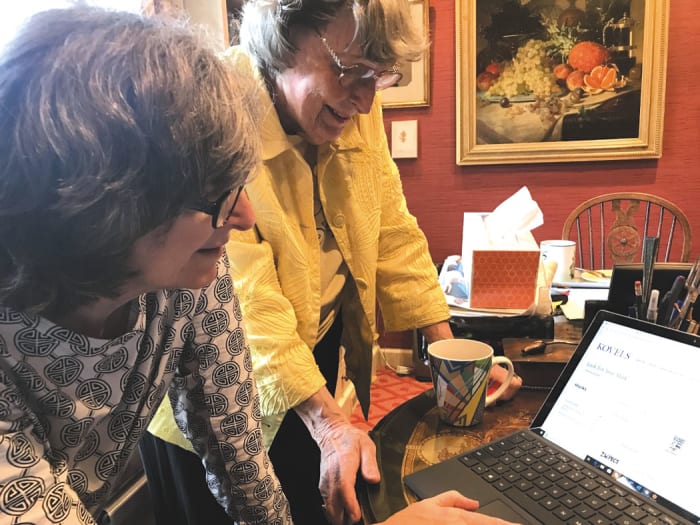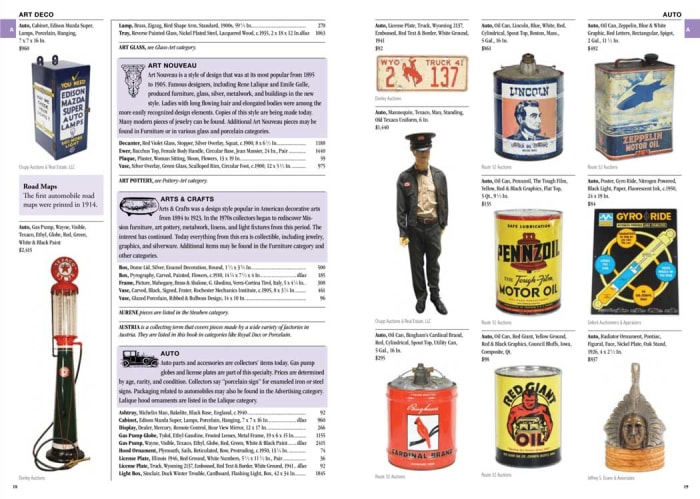#Kovels #Price #Guide #Remains #Collectors #Friend
Terry and Ralph Kovel were married in 1950 with Harry Truman in the White House and the Diner’s Club introducing a newfangled financial tool called the credit card. It was a heady time for young lovers, one in which a sign reading “The Buck Stops Here” sat on Truman’s Oval Office desk while consumers were discovering the perils of pushing the buck down the road in minimum monthly payments.
Honeymooning in Bermuda, the Kovels were captivated by the pottery and porcelain they saw in antiques shops, giving rise to both their collecting passion and their first book, 1953’s Dictionary of Marks – Pottery and Porcelain.
That one title positioned the couple as pioneers in the wilderness that was the antiques and collectibles field at that time. The Marks book went through forty-two printings, an unheard-of number, and yet in was their 1968 book, The Complete Antiques Price List, that cemented their legacy.
Known today as Kovels’ Antiques & Collectibles Price Guide, the fifty-fifth edition of the book is now available. Ralph died at age 88 in 2008, but Terry, who recently turned 94, is still going strong. With the help of her daughter, Kim, and a dedicated team in her home office in Shaker Heights, Ohio, Terry Kovel continues an unparalleled publishing tradition.
Tradition, however, has always depended on reinvention, changing to remain the same.
After ushering to market her latest annual title – a 640-page wonderland of 12,500 listings and 3,150 color images – one of the most informed and influential people in the history of the hobby reflects on her life with Ralph, the collecting world and even the challenges of being a working mother.
ANTIQUE TRADER: What were your goals when you set about writing your books?
TERRY KOVEL: We wanted to learn information that we – and everybody else – could use when we went shopping. We concentrated on things that you might find at house sales at that time. In the 1950s, “antiquing” was not for the average person. You inherited antiques, you didn’t buy them. As our writing expanded, we got letters from readers and focused on what they asked for – what they wanted and needed to know. And as collecting changed, we wrote updated versions and covered new topics.
AT: How did your first book get published?
KOVEL: As we were trying to learn about the things we found, we would ask questions about the marks on dishes and vases, but no one knew much. Ralph started listing marks by shape in a notebook with short descriptions. He didn’t tell me that he had sent his 10-page list to a publisher as an idea for a book. Six months later, Ralph got a letter saying they wanted to publish it and they offered an advance that equaled six weeks of his salary. We spent the next year writing the first general marks book for collectors. It was like doing a high school “source theme.” That book, Dictionary of Marks—Pottery and Porcelain, was a best seller, reprinted 42 times.
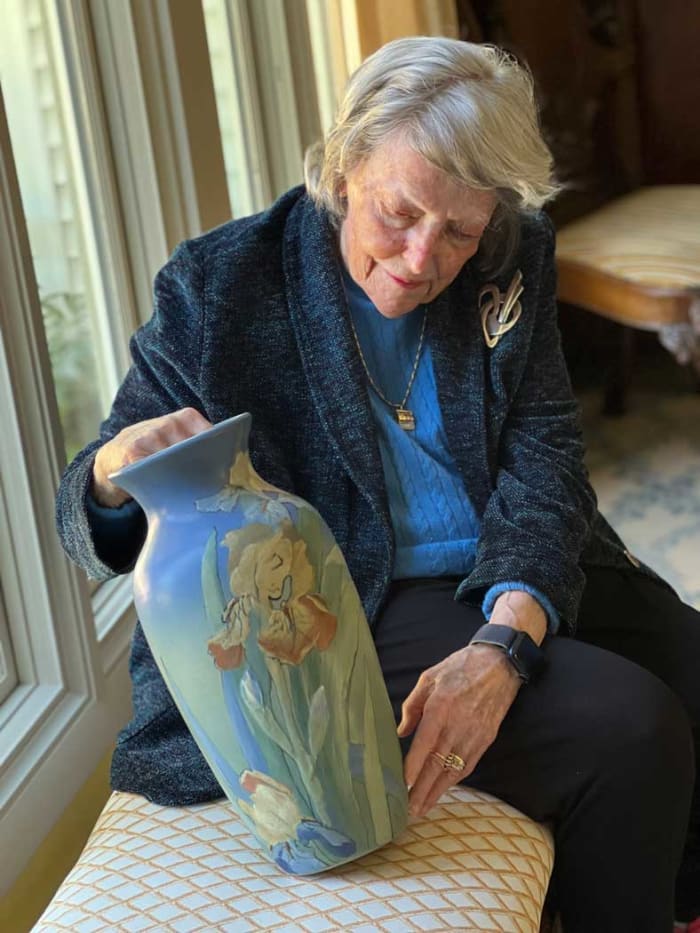
When she started collecting, Terry Kovel knew little about a world she would soon help identify for millions.
Courtesy of Kovels
AT: What made the marks’ book so innovative for collectors?
KOVEL: It was the first book available for the everyday collector that sorted marks by shape and not by country. It also contained short company histories and working dates. As collectors researched more modern pieces, it was followed in 1986 by an updated version with more modern marks.
AT: This is the 55th edition of Kovels’ Antiques & Collectibles Price Guide. How did it evolve since the first edition?
KOVEL: Our first price book, The Complete Antiques Price List, was published in 1968. It was hard cover, 436 pages of prices, and had no pictures. It was a best seller. Each year we rewrote the book with all new prices on antiques sold that year. The book includes paragraphs providing general information on makers and manufacturers, record prices, etc., that is kept current year to year. In 1974, the Kovel name was added, and we were now an annual publication. The book became The Kovels’ Antiques & Collectibles Price List in 1982, as we recognized the popular and growing interest in “collectibles,” a term that wasn’t even used in 1968. We started calling it a price “guide” in 2009 because it was more Google friendly.
AT: You were an early adapter to technology. How did that come about?
KOVEL: In 1968, we had heard about computers, and we were looking for ways to speed up the process of sorting thousands of prices. There was no official alphabetic sort at the time. I was teaching math and a student’s father was working in the fledgling computer industry and we asked him for advice. Our 1968 price book became the first bookstore book to be done using a computer. We were early arrivals to the Internet as well. Kovels.com went online in 1996.
AT: How did you handle being a working woman with a family in the 1950s?
KOVEL: When I started, I was married and had two small children [daughter Kim and son Lee]. The office was in our house, in an extra bedroom. Some of my friends, none of whom worked outside the home at the time, asked me why I was working – couldn’t my husband support us? When we started, it was an extra part-time job for both of us. As we needed more help, we developed flexible working hours to accommodate our family (I took my mother out for lunch every Friday!) and the families of our employees. As we needed more space, we moved out of the bedroom and converted the garage into a workspace.
AT: How do you arrive at the prices?
KOVEL: The staff records prices of items “in good condition” sold at shops, shows, auctions, and flea markets. We read hundreds of print publications and catalogs, check Internet sales and auctions, and other online services, and decide which antiques and collectibles are of most interest to most collectors in the U.S. The book doesn’t include prices for fine art paintings, antiquities, stamps, coins, or most types of books. Comic books are listed only in special categories like Superman.
AT: Does Kovels’ Price Guide cover a specific range?
KOVEL: The market we write for is neither the top nor the bottom of the antiques market, that is, it’s about the general antiques market for the general public. We concentrate on the average pieces in any category, and most listed pieces cost less than $10,000. We do, however, include some record-setting prices, some high-priced items that show a special and valuable rarity, and items from well-known collectors’ auctions because the fame adds to the price.
AT: How is the price of an item determined?
KOVEL: Prices are either realized prices from auctions, completed sales, or asking prices at shops or shows. We do not estimate or “update” prices. Almost all auction prices given include the buyer’s premium (the seller’s surcharge, added to the hammer price) because that is part of what the buyer paid, but prices do not include sales tax and extra charges like shipping. If a price range is given, at least two identical items were offered for sale at different prices. Ranges are usually only in categories where identical items can be identified, like pressed glass.
AT: What about researching antiques. How do you do that?
KOVEL: We have a staff and a complete research department with more than 20,000 books and clipping files. We also call dealers who offer pieces and ask about them.
AT: When did you first start collecting?
KOVEL: With Ralph, on our honeymoon in Bermuda in 1950. We spent almost all our wedding gift money and brought everything home. After we were married, we went to house sales to buy lamps and ashtrays. In the 1950s, the view of antiques was different. Antiques were inherited, not purchased. We happened to be in the right place at the right time. The national collections, like Williamsburg, had opened. More people had seen Europe and other countries where people kept things for several generations. But we hadn’t learned how to recognize antiques, and occasionally bought reproductions thinking they were old. It took twenty years to finally replace the repros with antiques.
AT: What do you collect?
KOVEL: Ralph and I had this discussion many times. What makes a collector versus an accumulator? Ralph thought it was once you bought more than three pieces of something. So, we have a LOT of collections and add to them all the time. Anytime we write a book, we end up collecting what we’ve written about. It’s the only way to write a book, to be knee-deep in it. We do have several ongoing collections though. Country store advertising, American art pottery and printed textiles are a few. And, of course, my famous banana sticker collection.
AT: Do you ever sell your things?
KOVEL: Not often. Our house just keeps getting filled up. Just recently, we sent 400 items from our advertising collection to an auction. We needed room.
AT: Do you consider antiques and collectibles a good investment?
KOVEL: Always, but not for the reasons usually given. Antiques and collectibles are useful and often less expensive when furnishing a new home. They hold resale value better than new pieces and give “psychic” enjoyment as a bonus. If you buy just to resell at a higher price later, don’t be an investor, be a dealer. If you want to collect, study shows and sales until you know what “speaks to you.” Then buy carefully and look for a treasure.
AT: What would you recommend a collector buy today?
KOVEL: Original Fifties furniture by name designers, but not the many modern copies. Artist-made modern-looking studio jewelry. Handmade artist ceramics and enamels. And, if on a very tight budget, early colored Pyrex with added designs. Some things are inexpensive because they have been out of style. Today, American art pottery is doing well at auctions but are still ignored at estate sales. Large, modern, colored glass vases and garden furniture are also hot.
AT: What else do you write about?
KOVEL: Aside from Kovels’ annual price guides, we have written more than 100 books and special reports about collecting. We write a monthly subscription newsletter, Kovels on Antiques & Collecting, available in print and online; a free weekly eNewsletter, Kovels Komments, with news updates about developments in the collecting world (just register on Kovels.com); information on marks and prices; answers to readers’ questions; and a syndicated weekly newspaper column. We have also had articles and columns in magazines such as Forbes, AARP The Magazine, House Beautiful, and a host of other publications. Ralph and I have starred in three national television series. And our website—Kovels.com, online since 1998—offers more than a million free prices, archived newsletter articles, a dictionary of marks, collectors’ questions, identification guides, advice on buying and selling, and latest news about what’s hot and what’s not.
AT: How has collecting impacted your life?
KOVEL: We go to shops, shows, flea markets, national conventions, museum exhibits, etc. and meet hundreds of other collectors and experts. Many of my friends are people I have met through collecting. We always have a lot to talk about—our collections, our travels, and our greatest finds. It’s been a lot of fun! Neither Ralph nor I were excited about sports, so we “exercised” at antiques shows and markets.
Inside Kovels’ Price Guide
The 640-page Kovels’ Antiques & Collectibles Price Guide 2023 ($29.99, Black Dog & Leventhal Publishers) features 12,500 listings and more than 3,150 color images, 720 categories and hundreds of dated marks, plus an all-new section in the center.
Each category includes an introductory paragraph with history, locations, explanations and other important information to help identify unknown pieces. Some include information on the scourge of the hobby: reproductions.
A word on values: Kovels’ includes a balance of prices and includes few items that sell for more than $5,000. The thought is by listing only a few very expensive pieces, readers can realize that a great paperweight may cost $10,000, but an average one is only $25. Nearly all prices are from the American market for the American market.
How they do it: Everything listed in the book was sold between June 2021 and June 2022. The staff checks prices, visits shops and other online services, and then decides which antiques and collectibles are of most interest to most collectors in the U.S.
Odds & ends: The most expensive item in the book? A 1700s Meissen shelf clock that sold for $1,593,000. The least expensive item? Bottle caps and a saucer, which sold for $2 each. The weirdest thing in the book? A taxidermy jackrabbit head with antlers.

